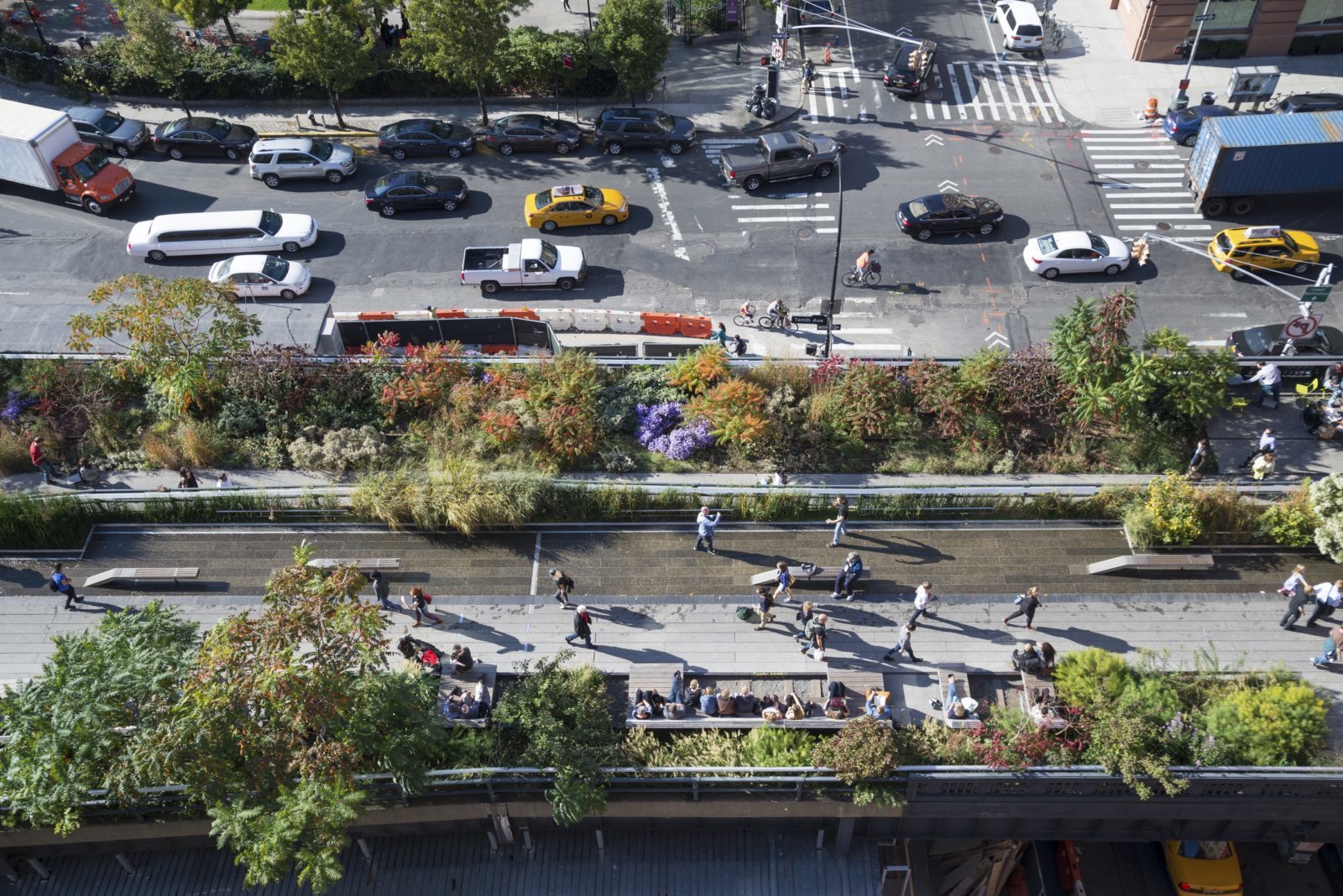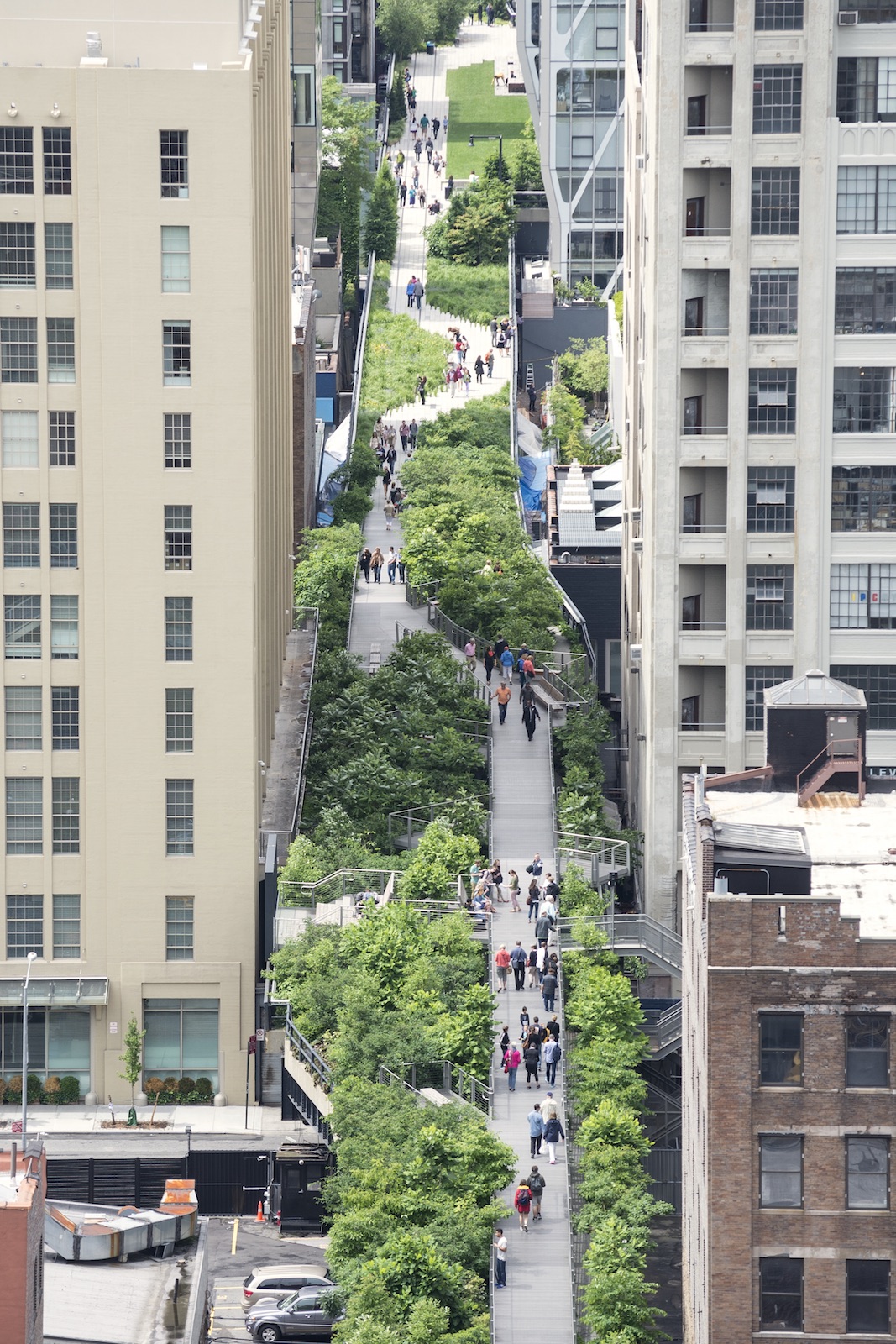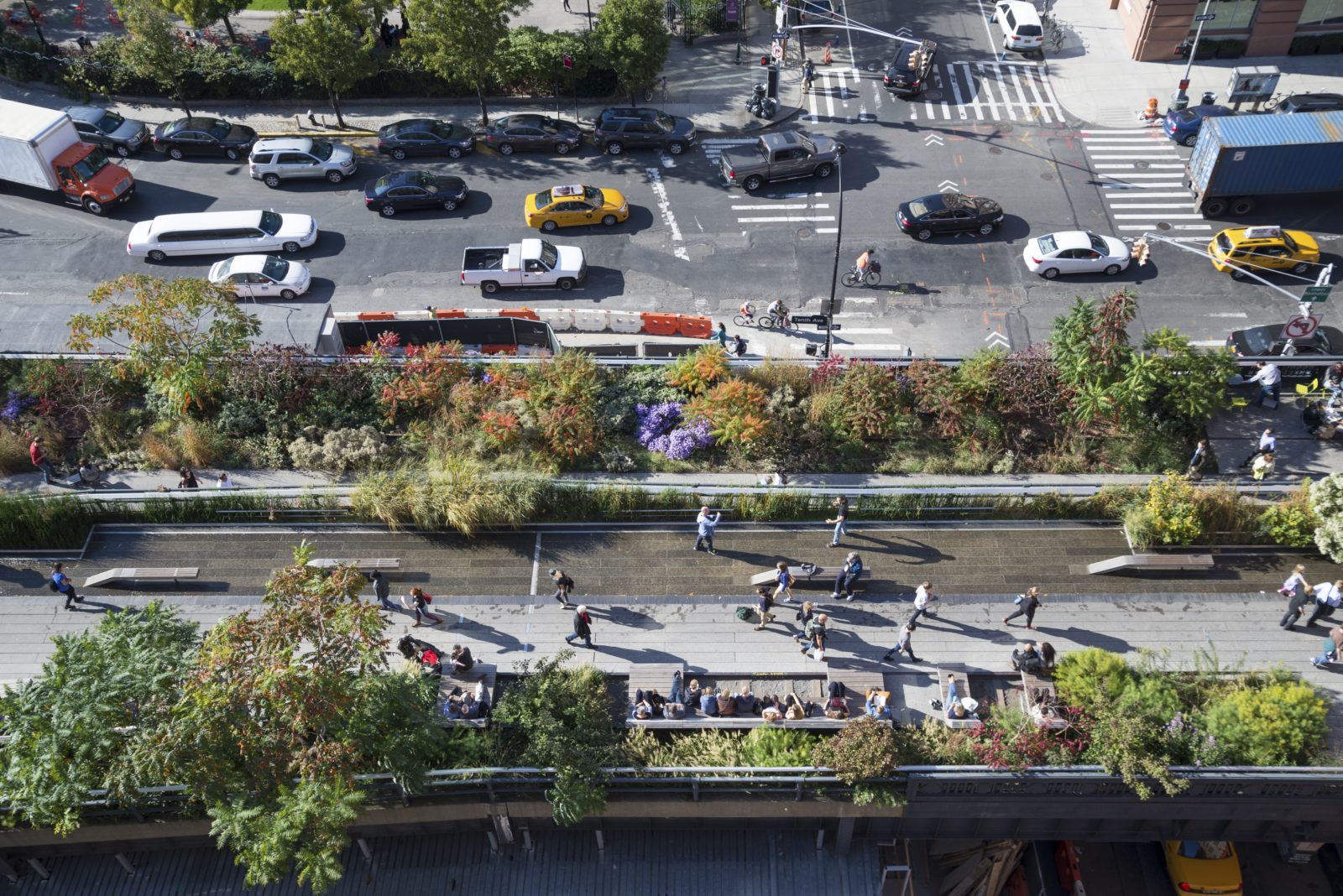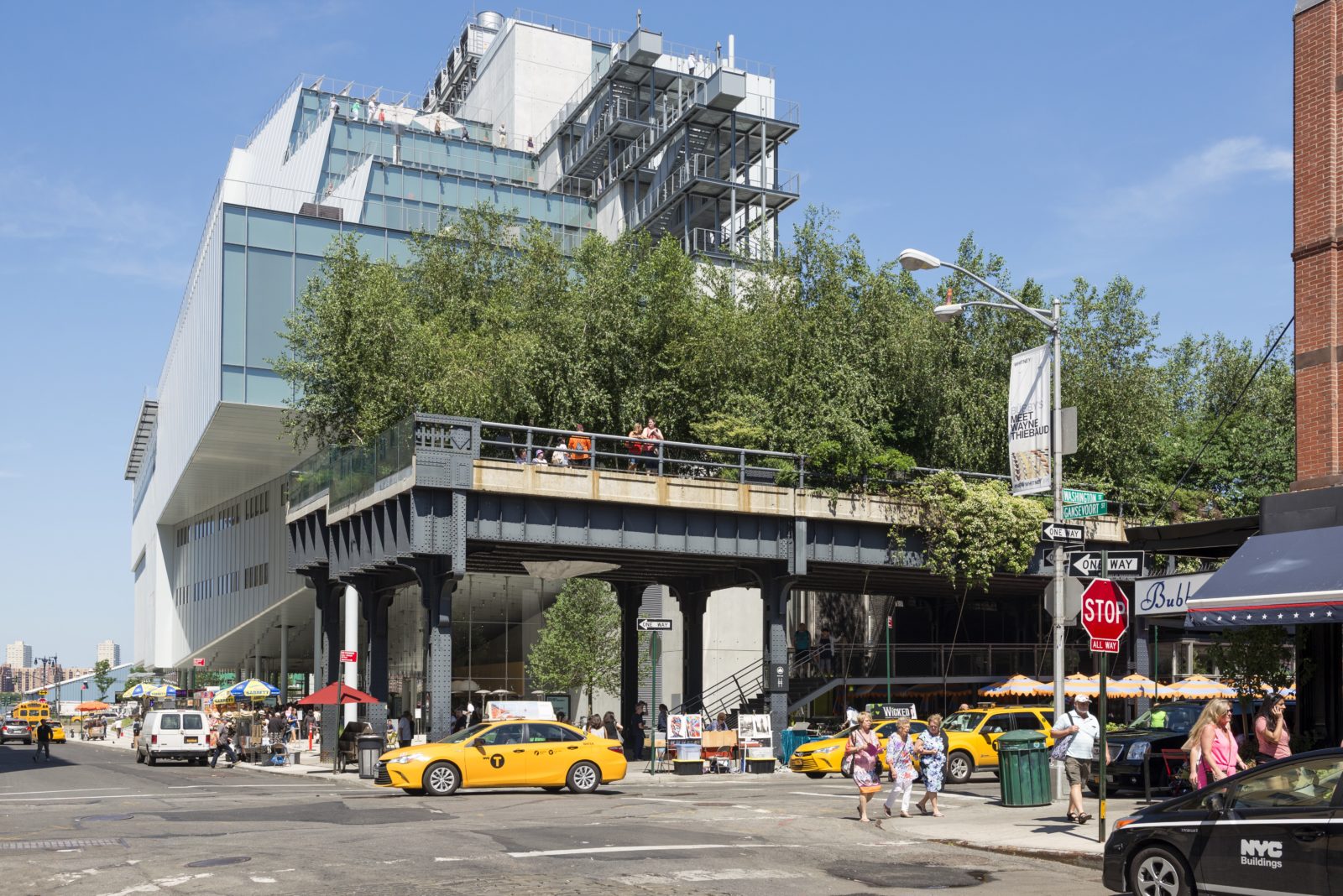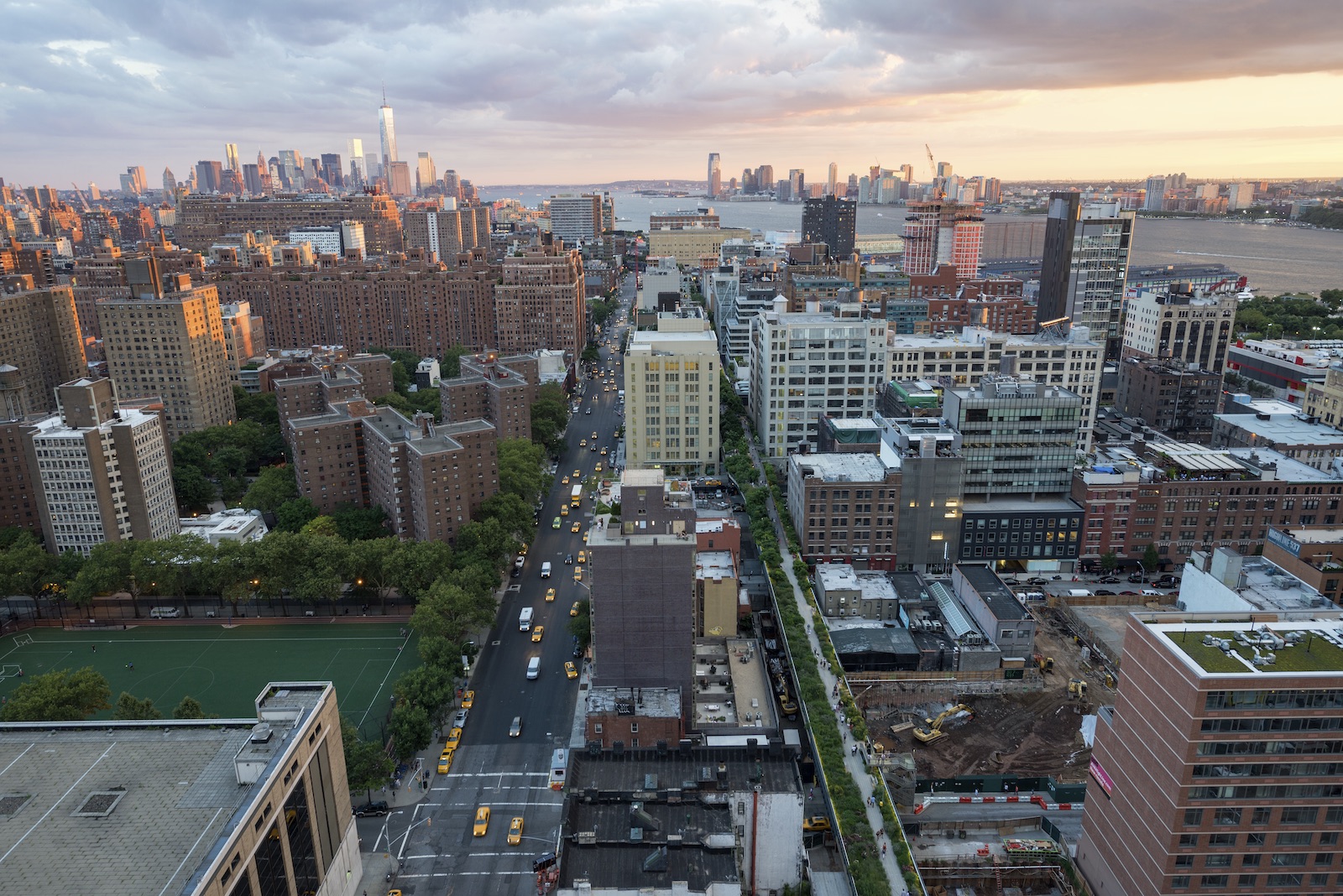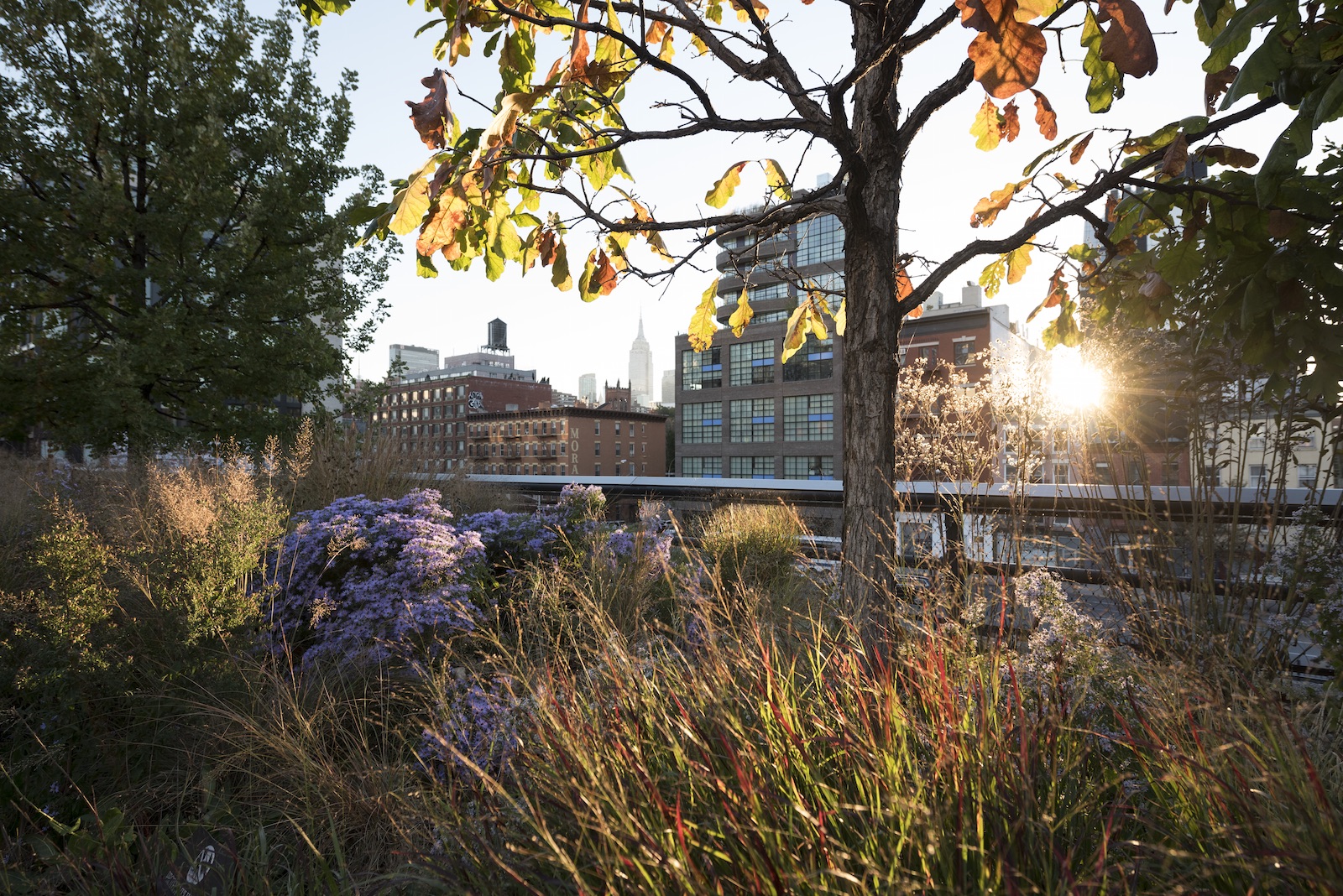The Harvard Graduate School of Design is pleased to announce that the 13th Veronica Rudge Green Prize in Urban Design has been awarded to the High Line in New York, designed collaboratively by James Corner Field Operations, Diller Scofidio + Renfro, and Piet Oudolf. The prize committee has elected to allot the monetary prize of $50,000 associated with the award to Friends of the High Line, in recognition of the organization’s originating efforts and continued stewardship behind the project.
The High Line is a linear public park built on elevated freight rail on Manhattan’s West Side. Stretching a mile and a half, the park opened to the public in three parts between 2009 and 2014; it now hosts over 450 programs and activities and welcomes nearly 8 million visitors each year. The High Line originated in 1934 as a spur of industrial-freight rail, elevating train traffic off the streets of Manhattan’s largest industrial district as part of a massive infrastructure project called the West Side Improvement Project. With the rise of interstate industrial trucking, the High Line fell out of use over the course of the mid-20th century, and ran its last train in 1980. Neighborhood residents Robert Hammond, Executive Director, and Joshua David founded Friends of the High Line in 1999 to advocate for the High Line’s preservation. Planning for rehabilitation and reuse began in 2002; in 2004, Friends of the High Line and the City of New York selected the design team of James Corner Field Operations, Diller Scofidio + Renfro, and Piet Oudolf.
As a design intervention, the High Line is equal parts infrastructure, landscape, and architecture, built around an impassioned commitment to post-industrial retrofitting, urban revitalization, recuperation of public space, and allure of the natural environment. Elevated 30 feet above Manhattan’s streets, the High Line offers a floating promenade overlooking New York’s urban culture, from the Midtown skyline to the Hudson River and the blend of activity on the roadways beneath it. The park’s plant design is inspired by the landscape that grew on the High Line during the 25 years after trains stopped running along it; various species of grasses, perennials, trees, and bushes were all chosen for their hardiness, sustainability, and textural and color variation.
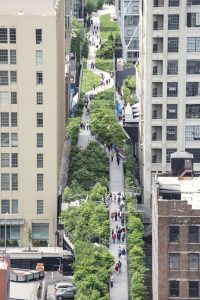
The High Line has been hailed as a model of urban regeneration and of collaboration across fields and perspectives. In summarizing the deliberation process, the Green Prize jury noted that a great urban-design project is one where multiple actors spanning public and private domains are involved in and committed to lasting urban change. The prize jury also praised Friends of the High Line for its support of design excellence from the very beginning of the project, for its agility and responsiveness amid a rapidly changing context, and for its advocacy of the High Line’s social and political relevance through community outreach programs and a wider dissemination program for cities around the United States.
“This year’s selection committee has chosen to recognize the High Line not only for its exceptional design quality, but also because it was a cooperatively-orchestrated, multifaceted endeavor in which citizens, top-tier design professionals, and public authorities worked together to innovate and successfully implement a new archetype for urban design, one that is now being replicated globally,” says Diane E. Davis, chair of the 2017 Green Prize jury and chair of the GSD’s Department of Urban Planning and Design. “The rare alignment of actors, each reaching distinction at the highest professional level, made the High Line both remarkable and worthy of this prize, embodying the best in the field of urban design while also contributing to the collective urban realm.”
Davis chaired the jury of the 2017 Green Prize, with jury members including: Stephen Gray, Assistant Professor of Design, GSD; Jeannette Kuo, Assistant Professor in Practice of Architecture, GSD; Paola Vigano, Professor of Urbanism, IUAV University of Venice; and Charles Waldheim, John E. Irving Professor of Landscape Architecture, GSD. The Green Prize is unique among international urban design award programs in that its jury members travel to experience finalist projects firsthand.
“Receiving this award is a tremendous honor. It validates the years of hard work our team and partners have put in toward reimagining how public space can improve the quality of life for its community,” says Robert Hammond, Co-Founder & Executive Director at Friends of the High Line. “We gladly accept this award for all New Yorkers and supporters of the High Line everywhere.”
“I and my team at Field Operations are delighted and honored with this Prize,” says James Corner, Founding Partner and CEO of James Corner Field Operations. “It is especially meaningful to me that the High Line is recognized by the Green Prize for the complex urban ecosystem that it is: an ecology of design, culture, urban renewal, civic leadership and new forms of public experience.”
“The future of the urban environment lies in the reinvention of infrastructure and the rethinking of public space,” says Ricardo Scofidio, Founding Partner at Diller Scofidio + Renfro. “Thanks to the visionary Friends of the High Line and a group of exceptional collaborators, the High Line does both. We are delighted the High Line is being honored by this award and hope it continues to inspire cities to develop sustainable public spaces.”
An exhibition on the High Line will be on view at the GSD’s Druker Design Gallery during the GSD’s 2018-2019 academic year.
For links to high-resolution artwork, interviews with jurors or winners, or more information, please contact:
Travis Dagenais
Assistant Director of Communications
Harvard University Graduate School of Design
48 Quincy Street, Suite 420
Cambridge, MA 02138
[email protected]
(617) 496-1143
